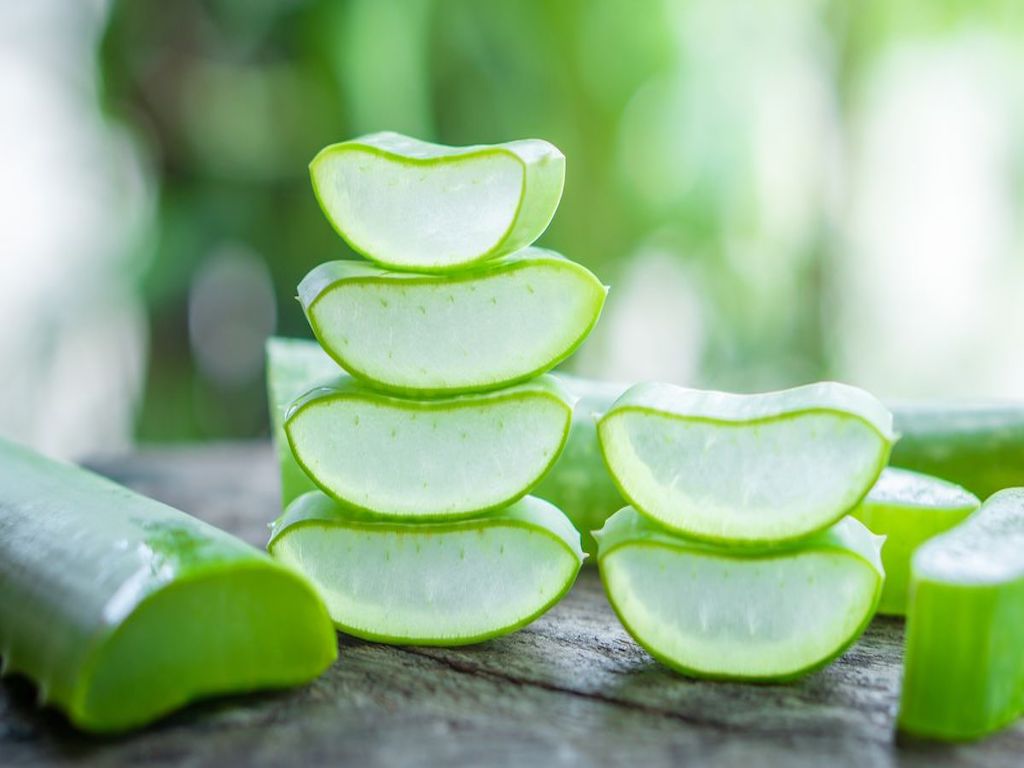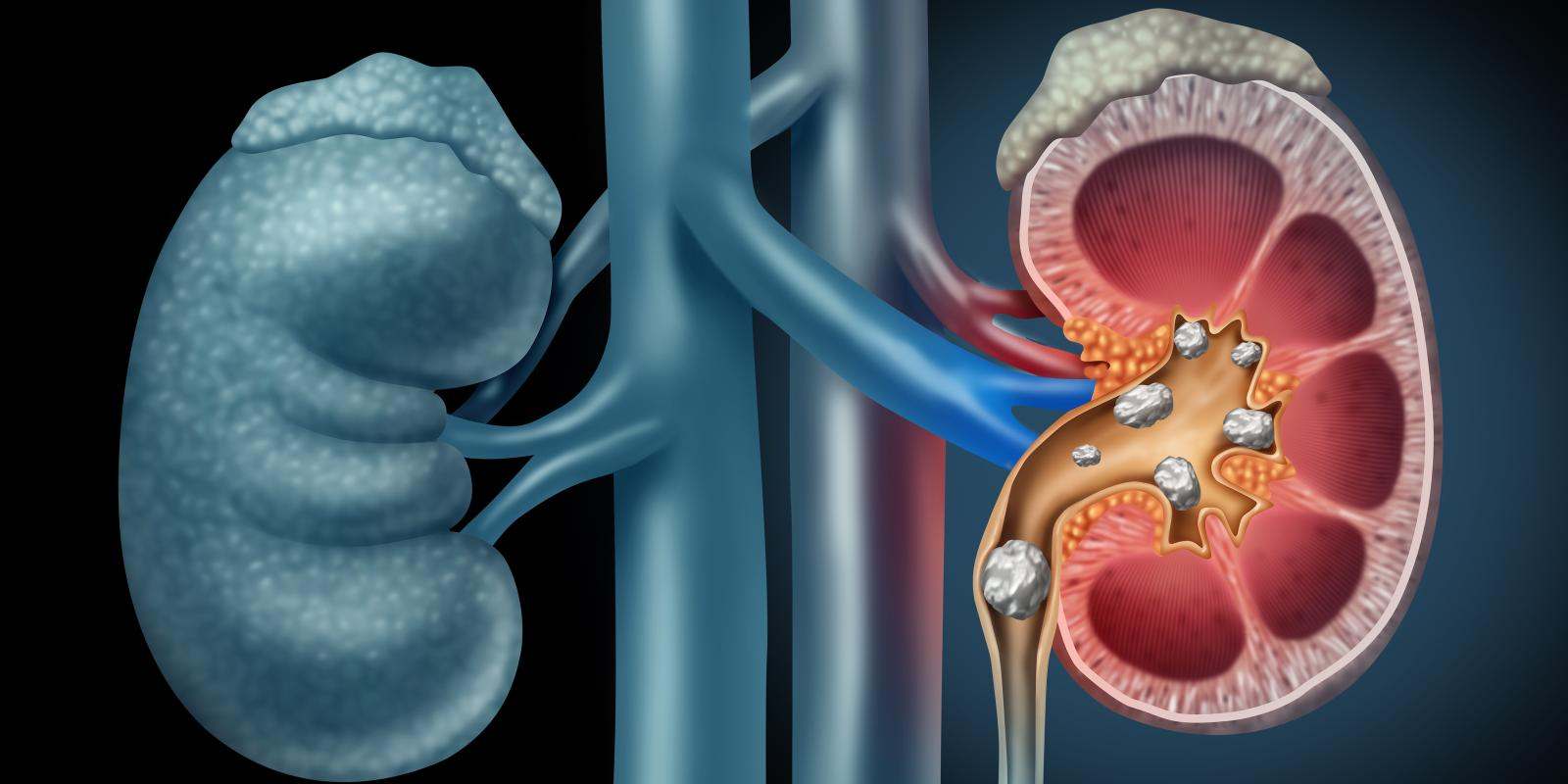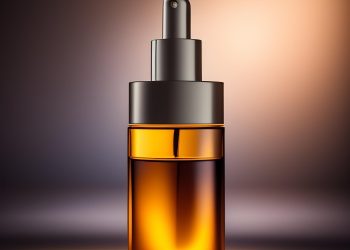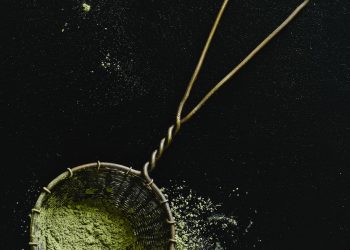Tea tree oil is quite famous due to its numerous healing properties. It can be used as an effective home remedy for various diseases. But did you know you could also use tea tree oil for keloids and scars?
A keloid refers to the abnormal growth of scar tissue on the skin. It can happen due to an injury or wound [1].
When you have a skin injury, fibrous tissues form a layer over the area to repair it to prevent infection. But, there are cases in which the scar tissues grow without control.
Sometimes they exceed the size of the original wound [2]. When this happens, keloids develop.
You may get rid of these ugly marks without going through the pain of surgery.
You may resolve keloid scars with the use of some home remedies. One of the most effective home remedies is using tea tree oil for keloids. [3]
Tea tree oil is good for keloids due to its many therapeutic benefits as evidenced by science.
This article reviews the therapeutic properties, uses, and benefits of tea tree oil for keloids treatment. Additionally, you’ll learn about the causes, symptoms, and risk factors of developing keloids.
Properties of Tea Tree Oil Based on Research
Tea tree oil is a pale yellow oil derived from the leaves of a plant that belongs to the Myrtaceae family [4].
The tea tree plant is native to Australia. The Australian aborigines were the first ones to use tea tree oil as a natural medicine a hundred years ago.
Scientists have studied the large pharmacological effects of this oil. And, they have found remarkable results.
Tea tree oil is a potent antiviral, antiseptic, anti-inflammatory, and antimicrobial agent [5].
Responsible for these actions are the terpene hydrocarbons, particularly sesquiterpenes, and monoterpenes. These chemicals are available in tea tree oil.
The most active compound in this oil is terpinene-4-ol. It may suppress the body’s inflammatory processes [6].
With all these active components, tea tree oil can relieve many ailments including:
Why Use Tea Tree Oil for Keloids Remedy?
Tea tree oil will not make your keloids disappear overnight.
But, it may help reduce its appearance and prevent its development.
1. Tea Tree Oil Hydrates Scars
Essential oils like tea tree oil are hydrating. [24]
A good way to improve the appearance of scars is to keep them hydrated.
You can achieve this through the topical application of tea tree oil on keloids.
2. It Reduces Inflammation
Research has established the ability of tea tree oil to tone down inflammation [7].
Its active compounds work in inhibiting the activities of pro-inflammatory enzymes.
By reducing inflammation, tea tree oil helps prevent the overgrowth of scar tissue. And at the same time, it provides relief from pain.
Read More: 13 Essential Oils for Inflammation & How to Use Them
3. Tea Tree Oil Fights Microbial Infection
Bacteria can infect wounds and make them worse.
When this happens, it’s more likely for keloids to form.
Luckily, tea tree oil may combat the bacteria.
Staphylococcus aureus and other bacteria may be open to its strong bactericidal effects [8, 9, 10].
4. This Oil Speeds Up Wound Healing
Tea tree oil has positive effects on the skin’s wound healing capacity.
It is effective as a first-aid treatment for burns and other skin injuries [11].
Tea tree oil can promote healing, and at the same time, reduce the size of wounds and scars [12].
10 Different Ways to Use Tea Tree Oil for Keloids
Make use of the following remedies to get rid of keloids.
1. Tea Tree Oil with Vitamin E
Vitamin E has always been famous for its valuable effects on skin health. [13]
Add it to tea tree oil to remove keloids.
How to use tea tree oil and vitamin E for keloids:
Prick one capsule to extract vitamin E oil. Combine 5 drops of tea tree oil, vitamin E oil, and 1 tsp of almond oil. Apply the mixture to the keloid. Wrap it with a cloth. Leave it on for one hour. Repeat the process every day for one to two months.
Read More: 8 Vitamins for Acne-Prone Skin That You Should Know
2. Add Tea Tree Oil to Olive Oil
Olive oil may help smoothen the skin to reduce the appearance of keloids. [14]
Try this mix of tea tree oil and olive oil to treat keloids:
Dilute 5 drops of tea tree oil with 1 tsp of olive oil. Spread a thin layer on your keloid. Massage it for 10 to 15 minutes. Do this every day for up to one month.
Read More: Olive Oil on Face: 6 Benefits + How to Use It
3. Blend Tea Tree Oil and Aloe Vera Gel
Aloe vera gel can disinfect wounds and clear acne. [15] Besides, it may also help stop keloid growth.
Learn how to use tea tree oil & aloe vera gel to soothe scars:
Add 5 drops of tea tree essential oil to 1 tsp of aloe gel. Mix well. Slather a generous amount on the keloid. Apply several times during the day. Repeat daily until the keloid grows smaller.
Read More: 11+ Health Benefits of Aloe Vera Oil (Backed by Scientific Evidence)
4. Combine Tea Tree Oil and Sea Salt
Sea salt is rich in magnesium. Using sea salt is an effective way to scrub the skin and keep it smooth, hydrated, and flawless. [16]
How to use tea tree oil and sea salt for keloid:
Mix 4 drops of tea tree oil and 1 tsp of sea salt in a cup of warm water. Soak the affected area in the mixture for 15 to 20 minutes. Do this keloid treatment with tea tree oil twice a day for 15 to 20 days.
Read More: Himalayan Salt Lamp Benefits: 19 Reasons to Buy One
5. Use Tea Tree Oil with Sea Salt & Aloe Vera
Unrefined sea salt such as Himalayan sea salt or Celtic sea salt is beneficial for human health.
Sea salt is rich in more than 80 different kinds of trace minerals essential for our well-being. [16]
You can mix tea tree oil with sea salt for a powerful antiseptic potion to get rid of keloid inflamed skin.
How to use tea tree oil, sea salt, and aloe vera on your keloids:
Dissolve 1 tsp of unrefined sea salt in 1 tablespoon of warm water. With a cotton ball apply the salt solution to the keloid. After 5 minutes apply 3-5 drops of tea tree oil to the inflammation using a cotton ball. Finally spread a layer of aloe vera gel on the keloid.
Repeat the process two to three times daily until you notice improvements.
6. Apply Tea Tree Oil, Rose Water, and Brown Sugar
Some people have tried using tea tree oil, rose water, and brown sugar for removing keloids from the skin.
How you can use tea tree oil, rose water, and brown sugar mix to soothe your scar:
Put 5 drops of tea tree oil, 2 tablespoons of rose water, and 2 tablespoons of brown sugar in a container. Blend well. Massage the mixture into the skin. Rinse with cool water. Follow this technique three times a week for two to three months.
Read More: 10 Easy Ways to Use Tea Tree Oil for Scabies
7. Use Tea Tree Oil with Aspirin
Aspirin is a non-steroidal and anti-inflammatory drug. It is a traditional remedy for fever, headaches, muscle pains, fatigue, swelling, etc.
The primary component of aspirin drugs or tablets is salicylate acid. [17]
People use aspirin tablets on their skin as a remedy for hypertrophic scars, keloid, acne, etc.
The keloid inflammation of the skin begins with NF-kB or Nuclear Factor-kB.
NF-kB is the gene expression or stress response after the injury to the skin. Later on, this stress response of the tissues leads to enzymes production. Thus, you experience inflammation or keloid in the skin.
Aspirin or salicylate acid can inhibit the NF-kB. It can also prevent the activation of enzymes to heal skin inflammations such as keloid or scars.
It is evident that 2-5 % aspirin is a practical remedy to cure topical dermatitis, acne, and keloids. [17]
You can use aspirin in combination with tea tree oil to curb and heal keloid growth, scar, and wound.
A simple way to use tea tree essential oil and aspirin for keloids:
Crush 4 aspirin tablets, add 1 tsp of water, and mix them well into a fine paste. Apply the aspirin paste on the keloid scars like a layer and leave it on for 30 minutes. Once the aspirin layers dry, rinse them off with water.
Now, soak a cotton ball with 2-3 drops of tea tree oil and dab it on the keloid. Repeat the treatment once daily until the keloids heal.
8. Use Tea Tree Oil, Baking Soda, and Lemon Juice
This combination has a successful result in getting rid of keloid growths.
Learn how you may use baking soda, lemon juice, and tea tree oil for keloid:
Add 3 drops of tea tree oil, 1 tsp of baking soda, ½ tsp of lemon juice, and 1 in a bowl. Mix well. Apply the mixture to the skin. Let it sit for 20 minutes.
Wash it off with warm water. Pat it dry with a clean towel. Do this procedure once a day for one to two months.
Read More: Baking Soda for Acne: 12 Easy Ways You Can Use
9. Blend Tea Tree Oil with Lavender Oil
Sweet and floral noted lavender essential oil comes from the lavender blossoms. Lavender is evergreen foliage that grows in plenty in the Mediterranean region.
It is one of the most famous aromatic oils for its heavenly fragrance and calming properties. Lavender oil has a long list of therapeutic benefits.
The herbal oil is full of anti-inflammatory, antiseptic, cicatrizant, sedative, and bactericidal components. [18]
Lavender oil is an effective remedy for skin disorders such as scars, wounds, acne, keloid, etc.
The linalyl acetate and linalool in lavender oil may decrease the growth and size of wounds.
The anti-inflammatory components inhibit the inflammation of the skin and prevent keloid growth. The oil may cure neurological problems, aches, and pains, hypertension, etc. as well. [19]
Tea tree oil and lavender oil may make a powerful combo to give a speedy recovery from keloids.
Try these essential oils for keloids:
Mix 3 drops of each tea tree oil and lavender oil. Now, soak a cotton ball in the oil blend. Apply the oil-soaked cotton ball to the keloids. Cover the inflamed skin with the oil blend. Leave the oil blend on the affected skin. Repeat the keloid treatment once daily.
Read More: 11 Health Benefits of Lavender Oil That You Should Know
10. Use Tea Tree Oil with Virgin Coconut Oil
Coconut oil is more than a remedy for hair fall and a healthy cooking alternative. Coconut oil has so many properties that are great for removing a majority of skin problems. The oil can treat acne, skin scarring, eczema, burns, etc. to name a few.
Researchers tested the effects of virgin coconut oil on young rats with keloids. It reduced the symptoms to some extent. It’s because of its active components and antioxidant properties [20].
Coconut oil acts as a thick, moisturizing barrier for the skin. It may work as an early scar treatment.
Application of tea tree oil with virgin oil may be highly effective. It’s because coconut oil has essential fatty acids and tea tree oil has wound healing properties. Both help in curing keloids up to a great extent.
Learn how you can use tea tree oil and coconut oil to soothe keloids:
Add a few drops of tea tree oil, 1 drop of neem oil, and 1-2 tablespoons of virgin coconut oil. Massage the affected area for 5-10 minutes. Repeat this remedy several times a day to get useful results.
Read More: Coconut Oil for Rosacea: Amazing Benefits & Uses
How Fast Can Tea Tree Oil Soothe Keloids?
People who have used tea tree oil have often shared that the oil may not vanish the inflammation once and for all. But it reduces the symptoms of keloids.
If you want to use tea tree oil for keloid scars, you have to maintain regularity in treatments. You may observe the good results within 2-3 weeks of the procedure.
Tea tree oil may not completely get rid of keloids. But it may help diminish its appearance and also inhibit its growth. With regular use, you will start noticing results within a couple of weeks of use.
Additional Tips
Keep these in mind when using tea tree oil not only for keloids but also for other skin conditions:
- Test it first on a small part of your skin to make sure you’re not allergic to it.
- Never swallow tea tree oil as it can cause poisoning and loss of muscle control.
- Do not use tea tree oil in pure form. Always dilute first in a carrier oil or water before applying to the skin.
Causes & Symptoms of Keloids
Keloids can appear on almost any part of the body, but they turn up on the earlobes, cheeks, chest, and shoulders. [1]
Skin injuries due to the following factors can cause the appearance of keloids:
- Acne
- Burns
- Scratches
- Ear piercing
- Chickenpox
- Surgical Incisions
- Trauma to the skin
- Vaccination
Common signs of keloids include: [2]
- Flesh, pink or red localized area
- Lumpy inflamed area
- Itchy skin patch
- Scar tissue continually growing
Most of the time, keloids are more significant than the original wound.
It takes about weeks or even months for a keloid to develop.
Although ugly and embarrassing, the good news is, that this skin problem is not a medical concern.
But it can be a significant cosmetic issue, making you feel self-conscious. It may be a problem if the keloid occupies a large part of your skin, or appears on your face.
What are the Risk Factors?
Some of the common risk factors of keloids include:[21]
- Age – Keloids usually affect people between the ages of 10 and 20.
- Race – Asians, African Americans, and Hispanics are more prone to keloids.
- Genetics – This skin problem also runs in the family. You are more likely to have a keloid if one or both of your parents have this problem.
- Skin color – People with a dark complexion may have an increased risk of keloids.
- Pregnancy – Pregnant women are at higher risk of keloids.
You must avoid body piercings, tattoos, and unnecessary surgical procedures. Besides, make sure to take care of your skin and protect it from injury.
When to See A Dermatologist
Generally, you don’t need medical attention for keloids. But if the growth continues and shows more symptoms, you may need to consult a dermatologist.
Besides, the uncontrolled growth of keloids could be a sign of skin cancer. Immediately visit a dermatologist if you see this symptom.
Bottom Line
Doctors are of the opinion that no single way of treating keloids is best suited for everyone. They term it a “therapeutic modality.”
The factor that makes the keloid treatment dynamic is the place where the scar has appeared.
The depth of the scar, the age of the patient, and if you treated it before or not are important factors while treating keloid scars.
Tea tree oil is an effective home remedy for treating keloid scars that comes in differing forms.
You may reduce the appearance of these scars using tea tree oil. You can also mix it with other natural ingredients for an effective home remedy for keloid scars.
Read Next: Top 10 Essential Oils for Scars: (Bonus! Oil Blend Recipes)





